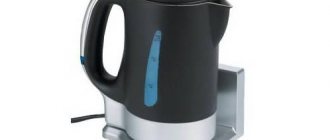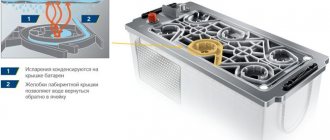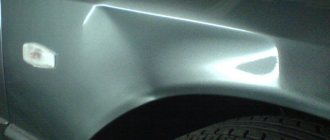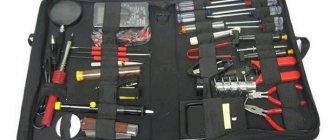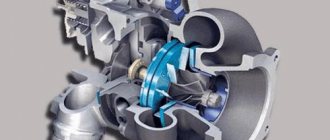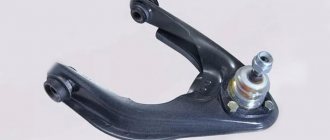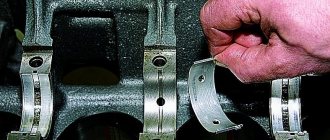Body
Author temass
Date
Jul 18, 2017
1 105
Share
Cold welding is a convenient and safe way to join parts made of the same or different materials into a single structure. In this case, it is not necessary to bring the surface temperature to high values, so we can talk about the safety of repair work.
- Welding cold seams - quick repairs and safe temperatures
- How to choose glue depending on the type of surface
- The best cold welding for metal: price and instructions for use
You can use cold welding when carrying out both home and automotive repairs, when it is necessary to fix faulty plumbing units, connect metal, plastic parts and other materials. Bonding becomes possible due to plastic deformation and subsequent hardening of the welding mass. After drying, the glue is able to retain its properties over a fairly wide temperature range.
What is cold welding?
The term itself is nothing more than a marketing slogan, meaning that the connection is not inferior in strength to real welding work. Is it so? Let's find out. And so, before us is a tube or bar of adhesive material with a catchy name.
What's inside? In the style of Lakomka ice cream, we see two plastic substances of different colors, inserted into each other and separated by film.
These two materials are very strong component adhesives based on epoxy resins. We all know how to glue with classic epoxy (or polyester) resin. We mix the resin and hardener in a ratio of 1:10, and after this the composition acquires the properties of glue. It’s a universal product, but it can’t be used to glue everything and not always.
- Firstly, a few drops of water that get into the solution during hardening can nullify all the work;
- Secondly, the high fluidity of the glue makes it impossible to form volumetric seams. Only flat gluing, or making improvised formwork;
- Another drawback is that until the parts are completely fixed, you cannot move the parts, and therefore cannot use them. Setting occurs after a few hours, and complete hardening occurs after a day.
These disadvantages narrow the scope of application of classic epoxy adhesive.
What to do if you need to urgently connect strong and hard materials, but it is impossible to wait for hardening or create formwork? And what to do in cases where exposure to moisture cannot be avoided?
There are no other options other than using cold welding. Such glue exists. Epoxy resin is brought to a paste consistency by adding reinforcing powder (usually metal) and thickeners. This is a stable state; the resin can remain in it for quite a long time, at least until the end of its shelf life.
Important! This rule applies only when there is no contact with the hardener, and preferably with air.
The second component, the hardener, is stored in the same form. In a good way, they should be stored in different packages. But since “cold welding” is more of an emergency product, efficiency and ease of use come first.
As a result, both components are stored in one flask, separated by film. There is contact at the diffusion level, so the shelf life of the glue in one package is short.
For strength, filler is added to the glue. Cellulose, metal filings, ceramic powders. This adds viscosity and allows you to literally fashion the required seam without specially fixing it.
A more liquid composition is also available. It is contained in two independent sealed tubes or other dispensers. It has the consistency of thick sour cream.
The effectiveness of this form of release is higher: interaction of components with each other during storage is eliminated, and the properties are preserved during repeated use. The fact is that plasticine-shaped glue in general packaging, after opening, has a very short shelf life. In fact, it is disposable.
And the version in tubes is used in small doses, and every time you squeeze it out you use the same high-quality composition.
The only drawback is that such glue cannot be used to create a stable shape; it can only be used to connect parts.
The composition of “cold welding” can be universal (which is most often the case), or it can be made for a specific material. Accordingly, the filler is also selected according to the applicability of the adhesive.
In this case, the strength of the “correct” joint is quite high, and gluing of other materials is possible, but not so strong.
Therefore, please read the instructions carefully before purchasing.
Compound
The typical chemical composition of reactive adhesives is simplistically a mixture of solvent and filler. The concentration of these two components determines the type and technology of work.
Solvent
The following can be used as a solvent in compounds for polyvinyl chloride coating:
- Tetrahydrofuran is a compound from the ether family. It can account for up to 80% of the total volume of the mixture.
- Acetone is a common ingredient in adhesive mixtures that have fast-setting properties.
Given the good solvent properties of acetone, it can be used to make glue at home.
Finely chopped pieces of old linoleum without a base are poured with this solvent and left for at least a day until a homogeneous consistency is obtained.
Glue made from solvent and linoleum residues
But it should be borne in mind that such glue will be significantly lower in quality than factory mixtures that contain special fillers.
Adhesive
Various additives serve as additives for adhesive fillers in mixtures intended for soldering linoleum:
- plasticizers;
- polyvinyl chloride;
- polyurethane;
- PSH-LS resins.
Pigments and modifiers can also be added to the adhesive mixture. Some manufacturers, for reasons of trade secrets, do not advertise information about component substances.
What can be sealed with cold welding?
The answer to this question is almost everything! The only exceptions are flexible materials. After final hardening, cold welding becomes hard.
- Metals. You can glue together or connect dissimilar materials;
- Plastic. Anything except polyethylene. Again, remember the rigidity of the joint;
- Ceramics, stone, glass. In any combination without restrictions. A tile glued end-to-end breaks in any other place, just not along the seam;
- Carpeting and linoleum. It can be to the floor, it can be end-to-end.
A separate topic is plumbing. The fact is that the glue material can be wet during operation. This allows you to glue damage to heating radiators or water pipes without draining water from the system.
You can imagine how “happy” the residents of an entire building will be in the middle of winter if all the apartments are left without heat for the whole day while your heating is being repaired. And with the help of cold welding you can quickly fix the leak yourself.
The repairs will last until the end of the heating season. Although, following the saying: “there is nothing more permanent than temporary,” our people simply “forget” about the temporary seam, and cold welding lasts well for years.
By the way, the lack of hygroscopicity is used not only when repairing current plumbing. When you mix the glue components (and it is more convenient to do this with your hands), the sticky mass sticks to your fingers. If you wet your hands a little before work, it will be easier to form the composition, and this will not affect the quality of the seam.
Important! This property should not be abused. If it is possible to work “dry”, do not use water. The seam will be more durable.
The next application that makes this glue unique is gluing car mufflers. Of course, we are not talking about a complete renovation. It will not be possible to obtain a power seam. But it’s easy to cover up a hole the size of a finger.
Moreover, we are not talking about a way to “hobble to the service station”; with such repairs you can drive for a long time. The glue will not catch fire or crumble. The only condition is that when purchasing, read on the label what temperature cold welding can withstand.
After this application, there is no need to worry about repairing the radiator at all. These are just “seeds”.
How to use cold welding correctly?
First of all, decide on the choice of glue itself. Universal or specialized, for a specific material. If you purchase it after an accident, take a narrow-profile one. And as a home “first aid kit” you should have universal glue.
And finally, advice on how to remove cold welding. There are only two ways: soak with solvent (if the material allows) or remove mechanically (file, chisel).
How to use cold welding for metal - video.
Subtleties of use and method of mixing components.
Another example of how to glue linoleum by cold welding - video.
Cold welding for metal is a frequent guest of repair kits that many motorists carry with them. Indeed, it is difficult to imagine a long journey without this repair material, because any trouble can await the driver along the way, for example, a broken gas tank, radiator, and similar situations.
Cold welding can be an indispensable assistant in many cases, so we strongly recommend not only keeping it at home all the time, but also taking it with you on a long journey.
Video instructions on the use of cold welding for metal can be viewed at the end of the article.
In this material we will talk about what cold welding for metal is, provide instructions for its use, and describe the features of repairing a muffler, radiator, body and gas tank using cold welding.
Cold welding for metal is a special composite polymer that has high adhesion to various materials (in this case, metals). In simple terms, cold welding is an adhesive that quickly hardens and does not react with motor oil, gasoline, diesel fuel and similar petroleum products.
Such products are divided into 2 types: liquid and plastic compositions.
- Liquid compositions are usually created on the basis of epoxy resin, which gradually hardens after entering into a chemical reaction with a hardener. A distinctive feature of the resin is the ability to combine it with various substrates and reinforcing elements (fiberglass, metal mesh), as well as the absence of emissions in the form of moisture, harmful substances or a strong odor.
- As for plastic compounds, these are special putties. They look like two-layer or two single-layer bars. Outwardly, they can easily be confused with simple children's plasticine.
After we have figured out what cold welding for metal is, we can move on to the next point of our educational program.
Connection method
In fact, this is not welding, but gluing together metal substrates using glue without the additional use of heat. For this, an adhesive composition is used, which, after hardening, forms a seam that has the properties of metal. Its use is advisable in the following cases:
- There is a possibility that during operation the structure may slightly warp at the connecting seam.
- The connected parts have a complex geometric configuration.
- It is necessary to glue 2 metals of different structure.
In these cases, the traditional welding process becomes impractical. Cold welding adhesive allows you to glue metal surfaces so firmly that the connection can withstand heavy loads, including prolonged vibration. Cold welding adhesive is often used when repairing metal car parts, as well as at home to eliminate leaks in various household appliances.
How to choose a good cold weld for metal
Cold welding can be useful not only on a long journey, when the nearest service station is several tens or even hundreds of kilometers away (as well as a tow truck), while the breakdown must be repaired as soon as possible. In addition, any thrifty car owner will also have this product in their garage.
However, you should not only be able to use cold welding correctly, but also choose it wisely, since there are more than enough low-quality products on the market, but there are also a lot of good ones. When choosing, you should pay special attention to the following points:
- types of surfaces that cold welding can glue;
- operating temperature range (the wider it is, the better);
- instructions and recommendations for use.
When choosing cold welding for metal, it is advisable to give preference to well-known, well-established manufacturers, for example, Loctite, Poxipol, Permatex, Devcon, WEICON. Of course, the price for branded products will be higher than for an underground homemade gun, but you will be sure that such a repair composition will not let you down at the right time.
How to use
How to use glue? The gluing technology is simple, it can be described using the example of repairing a gas tank:
- Identify the location of the damage. Depending on the make of the car, in some cases it may be necessary to remove the gas tank or drive the car into a pit.
- Empty the gas tank of its contents. Drain the gasoline, and if the gas tank has drainage protection, you can disconnect the fuel hose assembly.
- Thoroughly clean the surface around the damaged area and degrease it with white spirit.
- Mix the adhesive components (if they are in separate tubes) in a specially prepared container. If the substance is released in a flask divided into 2 parts, then mixing in a separate container is not required - the components will mix when passing through the dispenser.
- Quickly spread the finished composition over the surface to be repaired and, if necessary, apply a metal patch on top. Press the parts that need to be glued tightly together. You need to act quickly, because after mixing with the hardener, the mass hardens within a few minutes. If you need to repair a small hole, then after mixing, knead the adhesive mass with your fingers, form it into a small plate and apply it to the damaged area.
Manufacturers advise immediately after hardening to process the seam for smoothness with a file or sandpaper. The hardening time depends on the brand of glue. But experienced craftsmen recommend, regardless of the hardening time, to wait an hour before starting sanding work, so that the seam sets more completely.
If the need arises to remove the resulting weld, this can always be done mechanically using a chisel or file.
You can glue any materials together using cold welding - the connection will be more durable. This method of joining various materials is widely used by home craftsmen to repair household and heating appliances, as well as by motorists to repair minor breakdowns in the car.
source
Instructions for using cold welding for metal
Cold welding for metal can be useful not only for car repairs. In addition, it is widely used in everyday life (gluing ceramics, etc.).
As for cars, it is used for gluing torn or broken metal parts, repairing damage to radiators, fuel tanks, mufflers, crankcases, pallets and other elements. Most often, plastic compounds are used for this, but sometimes liquid ones are also used, because their strength is higher than that of putties.
The main advantage of such repair kits is that to repair damage in the tank, radiator and similar parts, it is not necessary to drain gasoline, diesel fuel or oil. Cold welding does not react with them, is easy to use and hardens quickly. In addition, the consumption of this material is relatively small, and it will serve you more than once.
To seal cracks or holes in tanks, mufflers, pallets, etc. using cold welding, the same scheme is used, so there is no need to describe each case separately. You just need to follow the general recommendations.
- Surface preparation - first of all, it involves stripping the metal, which is carried out with sandpaper. Of course, you can do without this on the way, but with cleaning the glue will last much longer, because small scratches and roughness provide the best adhesion of the composition to the surface.
- Degreasing - for this, anti-silicone is used (at worst, regular gasoline will do), which should be used to wet a piece of cloth and wipe the work surface.
- Preparation of cold welding - you need to squeeze out the required amount of material from a tube or cut (break off) from a block, then knead (stir) until it has a homogeneous and plastic consistency. As a rule, the mixture warms up a little. Cold welding, instructions for which are usually included in the kit, does not require any special operating skills.
- Applying glue - using the resulting composition, carefully repair the damage and level the surface. It is recommended to do this as quickly as possible, as some compounds set in just a few minutes.
After application, you should wait until it dries completely (it can take from an hour to a day). Naturally, on the road it is not always possible to wait that long, so 20 minutes of waiting will be enough for the initial hardening, which is enough to “reach” the nearest auto repair shop.
For detailed video instructions on using cold welding for metal, see the end of this article.
Using welding to repair polypropylene pipes
Joints in polypropylene pipes should not leak, so in the future it is recommended to use a high-quality welding machine to process polypropylene pipes. It will allow work to be carried out in accordance with technology. The temperature maintained by cold welding depends on the composition and characteristics indicated on the packaging.
If all instructions are strictly followed, the seam will retain its strength. It should be realized that the greatest strength can only be achieved with a more precise application of cold welding. Therefore, compositions with the highest temperatures are used when repairing parts operated under normal temperature conditions.
The adhesive composition used in cold welding is used to connect all surfaces that are heated to very high temperatures, when the possibility of using classical welding is problematic. The mixture can be kept in working order for up to 3 minutes. Therefore, glue should be applied on time.
When gluing two surfaces, they must be firmly fixed using a clamp. The required time indicated in the instructions must pass, after which the composition becomes solid. After repair, the surface can be puttied and painted over. The drying time of the composition can range from 1 to 8 hours. The instructions must indicate the method of using cold welding and its brand. All manufacturer's advice should not be violated, since otherwise the strength of the seams will be the least.
In most cases, cold welding is used to repair cars and heating appliances. In each case, the use of this method has its own nuances, since, for example, repairing a car gas tank allows you to extend the shelf life, which eliminates the need to spend large amounts of money on new parts.
Before work, good access to warped areas of the surface is necessary. There is a usual way to alleviate this problem for yourself if you have a small hole: use a screwdriver to bring it to a rounded shape, and then use a screw to screw it in, which is suitable across the diameter, so that you can strengthen it with cold welding.
The cold welding method used for radiators is one of the popular methods of using these compounds by motorists. You can find exactly where the radiator is damaged by immersing it under water and blowing it out using a compressor. The places where many bubbles appear that come to the surface from the water are places of damage.
The cold welding method will only be a one-time option - the radiator usually cannot withstand long-term use. You can use it to weld a muffler. It depends on the temperature level that the composition can withstand.
It is imperative to use a modification for high temperatures before gluing the surface. This is due to preliminary cleaning and preparation of the part. For example, the service life of a repaired muffler will be longer.
Heating devices require very high-quality cold welding, since the cost of repair if the seam is deformed again after its use is high. Therefore, it is acceptable to use compositions that can withstand a fairly high temperature level, but it is better to use compositions created for constant contact with water.
If the damage is not very large, this method will solve all the problems, and for holes of the largest parameters, cold welding will only be a temporary solution to the repair problem. For routine repairs of metal products, a welding machine is better suited. To repair main components, it is better not to use the cold method, since safety in their work is of paramount importance.
Features of the use of cold welding for metal
When working with cold welding, you should take into account some nuances that will greatly facilitate the process and make it safer.
- Liquid compositions in syringes
- when they are squeezed out, both the glue and the hardener are mixed automatically (since they are supplied simultaneously), but experts recommend not applying such a composition immediately, but squeezing it into a container and mixing again. - Amount of material
– it should be prepared in small portions. The fact is that the initial setting occurs quite quickly (from 5 to 20 minutes), so if you prepare too much welding, you simply may not have time to use it all and, as a result, throw it away. - Plastic and wood
- cold metal welding is also widely used to fasten them together. The instructions stipulate the possibility of such use, so we consider it mandatory to read before using glue. - The need to clean and degrease the surface
- today this is not necessary, since modern compounds firmly adhere to greasy surfaces (due to high adhesion). However, cleaning the job site ensures a higher quality repair. - Loads
- the impact of mechanical loads on the repaired area before the composition has completely dried is extremely undesirable. - Quality of work
- to achieve maximum results, you should measure the amount of cold welding and hardener as accurately as possible, and also mix the composition thoroughly. - Gloves
– if possible, it is better to work with gloves, since the effect of some cold welding components on the skin is harmful.
All of the above is clearly demonstrated in the video below.
Main types
Cold welding can be two-component or one-component; there are serious differences between these two groups. One-component glue is easier to work with, but it is not always the most effective in its segment.
As for two-component metal adhesives, they are literally sold in two separate tubes. And one component must be mixed with the second before use. It is recommended to create the working mixture in non-metallic containers. Stirring tools should also not be made of metal.
In addition, cold weld adhesives can be liquid or plasticine-like. Liquid ones are almost always two-component, and one of the components is a hardener.
Plasticine-shaped received this name for obvious reasons. Their structure and consistency resembles children's plasticine. These adhesives come in the form of a single-layer or two-layer bar. If there are two layers, then they need to be carefully kneaded and mixed with each other.
High-temperature cold welding for metal should be included in a special group. They differ from others in that they can easily tolerate extreme temperatures above zero. The acceptable operating temperature of such compositions can reach +1000 or, say, +1300 °C.
The amazing properties of such welds make it possible to use them for repairing exhaust pipes, exhaust manifolds, mufflers, furnaces, boilers, and chimneys.
That is, they will be appropriate wherever conventional welding work is needed and where contact with open fire or highly heated substances and environments is possible.
Interestingly, as the temperature increases, such a mixture only becomes stronger.
Video instructions for using cold welding for metal
Comments:
Comments:
- Welding Application Recommendations for Metal
- Recommendations for use of the composition
Cold welding is a method of joining iron parts that eliminates the effects of temperature.
Cold welding can be purchased at any car dealership.
Yes, this method will not make the parts newer, but it will extend the shelf life of the part while the owner is looking for options to replace it. This connection method allows not only the gap that has formed in the tank, which has begun to leak, to be repaired, but also all parts to be replaced with new ones.
For plastic
As already noted, cold welding can be used not only for metals, but also for other materials. For example, there are several types of welding for PVC and linoleum.
They are designated by Latin letters - A, C or T. Type A is a liquid welding for linoleum and plastic, with which you can eliminate even very small cracks, but it is only applicable for new PVC linoleums.
Type C cold welding is thicker and is used when it is necessary to re-glue loose seams on old linoleum. Cold welding (adhesive) type T is suitable for difficult tasks and cases.
This type of welding can be used to join end-to-end even linoleums on a wide felt sole. Type T compositions are popular with many repair professionals, which indicates their high quality.
Cold welding for metal: characteristics and properties
The welding product is a two-component material with ductility.
When the necessary components are mixed together, a chemical reaction occurs, leading to hardening of the joints. Components are made using epoxy resins with iron additives.
The iron component is required as a filler for welding. Additional additives include sulfur and other important elements. Bonding usually occurs based on the deformation process of the plastic used for the connection, that is, its precise penetration into any surfaces.
During hardening, the seam becomes quite rigid, so it can withstand considerable loads. Technical reference books contain examples of how the use of the process causes the restoration of components and parts of even heavy-duty vehicles, the service life of which has been extended to 50 thousand km. regarding engines.
Cold welding is a relatively new type of connection by gluing. Before starting work, the cold welding instructions for metal should be carefully studied. This method is most suitable for non-ferrous and ferrous metals. The cold welding method is used to seal, glue, and repair any products. You can sometimes work on restoring missing pieces. The possibility of its use in the temperature range from – 60°C to + 150°C is acceptable, when welding is carried out in rooms with a high level of air humidity.
Return to contents
Before using the cold joining method, you need to prepare the necessary surface, which is cleaned by sanding. If there is a coating based on paints and varnishes, they must be removed, and if there is corrosion, it must be treated. Then you need to degrease the required surface; you can, for example, use acetone.
The kit used to make the connection involves the presence of two rods made of a substance that resembles plasticine. The components are combined, and after half an hour the entire composition becomes solid. Combine the mixture manually, kneading it, as is the case with plasticine.
The cold welding compound is sometimes applied manually, sometimes spatulas are used, which are moistened with water before starting work. Each part should remain stationary for about half an hour after repair. Final hardening may occur after a day.
When working, simple safety precautions are required:
- Use gloves.
- Do not use materials that react with welding products.
- Rinse the skin if the welding product gets on the skin, and then immediately seek help from a doctor.
Cold welding must be kneaded in your hands before use.
You can wash the composition off your hands with soap. The set of products for welding should be stored in a dry and dark room with a temperature not exceeding 35°C. After the product used has dried, it is softened in heat.
Cold welding is a special polymer that has the ability to bond when the surface is heated. The strength of the polymer depends entirely on the components, on the correct penetration of the glue into the surfaces and their preparation. Classic welding using a welding machine allows you to make a stronger connection that lasts much longer than after cold welding. Therefore, it should only be used for repairing various small parts.
Return to contents
Features of the material
How can you seal a gas tankImportant for a motorist to know
Metal glue is most effective where conventional welding cannot be used. The welding mixture has the necessary plasticity to penetrate the metal and thereby combine surfaces.
This welding method refers to deep plastic deformation technologies, when the oxide layer on the surface is destroyed, and the interval between the welded elements is measured by the parameters of the crystal lattice. Due to the increase in the energy level of the materials, a strong chemical bond is formed.
When filling the holes, some of the cold weld should get inside. For large holes, patches are used, which are applied on top and fixed with adhesive material. The finished connection can be subjected to cleaning for subsequent finishing and painting, as well as mechanical processing, including drilling holes and tapping.
Cold welding works great on structures made of ferrous and non-ferrous materials, allows you to join them together and quickly eliminate leaks. It is also an ideal solution for heat-sensitive products.
Joints obtained by cold welding have a significant service life, but subject to the absence of work loads.
The adhesive can be used at low temperatures

